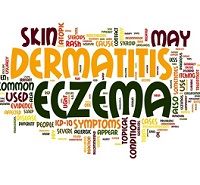Article
Inpatient Care Good Option for Resistant Atopic Dermatitis?
Author(s):
An experimental inpatient program worked for atopic dermatitis that had not been resolved despite treatment.

The majority of patients with difficult to control atopic dermatitis (AD) admitted into a unique inpatient treatment and education program achieved sustained disease control after an average stay of 11 days, according to an observational study report.
Jorien Van Der Schaft, MD, PhD, and colleagues of the Department of Dermatology and Allergology, University Medical Center Utrecht, Utrecht, The Netherlands, published their follow-up report of 79 inpatients in the September issue of Acta Dermato-Venereologica.
The inpatient program was developed, according to the investigators, to educate and motivate patients with severe conditions to consistently follow their necessarily intensive treatment regimens.
"Treatment may fail due to inability to combine time spent on treatment with work, family activities and social activities," Van Der Schaft and colleagues explained. "Patients are sometimes too exhausted due to sleep deprivation to be able to deal with intensive topical therapy. Other factors responsible for outpatient treatment failure are psychosocial factors; for instance, depression or lack of social support."
Medical treatments in the program were optimized with dermatologist consultations. Specialized nurses taught patients how to use the topical treatments (fingertip unit, use of a tapering schedule) and how to relieve itch and to cope with nocturnal itch attacks. Social workers provided patients with self-management training, with attention on coping with AD through daily activities.
The mean percentage decrease on the primary outcome measure of the Six Area, Six Sign Atopic Dermatitis (SASSAD) score was 60.7 percent between admission and discharge, with 64 patients (81 percent) reducing their score by at least 50 percent (SASSAD50). Follow-up at 3 months found 63 patient (79.7 percent) had maintained the SASSAD50, and at 9 to 12 months the mean percentage decrease SASSAD score in patients remaining in follow-up was 52.4 percent
Although most of the patients admitted to this program had a history of requiring oral immunosuppressive medication for their difficult to treat AD, most patients were discharged with improved symptoms on topical steroids and emollients.
"This study showed that patients with difficult to control AD were not always difficult to treat," Van Der Schaft and colleagues observed, and suggest such programs "may prevent or delay systemic immunosuppressive treatment."
Further Reading: AD patients need educating.
Report shows better quality of life in new AD treatment.

Study Compares ChatGPT-4 Diagnostic Abilities to Teledermatologists




